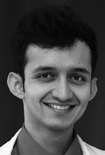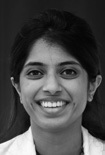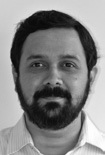THE EDITOR'S CORNER
A Paradigm Shift in Cephalometric Imaging
Radiographic cephalometry has been our diagnostic workhorse for nearly three-quarters of a century--ever since Pacini first described a workable cephalostat and a radiographic protocol for anthropometric application.1 Broadbent in the United States2 and Hofrath in Germany3 made cephalometrics available to all practicing orthodontists, while Downs,4-6 Steiner,7-9 and Ricketts10,11 made the technique usable and understandable. Because of their classic papers, along with those of innumerable other authors, cephalometrics has become such an important part of orthodontic diagnosis and treatment planning that we have come to assume its inevitability. That assumption is about to be challenged in a dramatic way. To borrow a term from the New Age management books, we are on the verge of a paradigm shift.
Computed tomography has been used in medicine since the last half of the 20th century. CT scans provide extraordinarily clear three-dimensional information on hard-structure anatomy for neurosurgeons, plastic surgeons, maxillofacial surgeons, orthopedists, and anyone else involved in reconstructive surgery. Essentially, they produce a radiographic impression of the bones. Stereolithography and similar techniques then make it possible to produce precise three-dimensional models of patients' skulls, maxillae, mandibles, and other osseous structures in a manner completely analogous to our traditional use of study models to examine the dentition.
Similar articles from the archive:
CT examinations have increased dramatically over the past two decades, with the annual number in the United States rising from 5-5.5 million in 198312 to 20 million in 1995.13 These numbers do not include CT examinations for dental applications, but the trend is similar in dentistry, with reformatted CT becoming more common in maxillofacial imaging,14 particularly for dental implant placement. More recently, CT scans have also been used to evaluate impacted maxillary canines.15,16 It is now clear that CT will become the gold standard in maxillofacial imaging within the next decade.17
Recently, a new generation of maxillofacial CT has been developed specifically for dentistry.18 Several units are already in use, the most recent installation being in the Department of Orthodontics at the University of Southern California. The NewTom 9000 (Aperio Services, Inc., Sarasota,FL), a fixed-anode, cone-beam volumetric scanner, is similar to a medical CT scanner, but with an image intensifier that allows images to be generated with significantly less radiation. While conventional CT uses several rotations of the x-ray head around the patient, acquiring an image "slice" with each rotation, this device uses one 360° rotation to acquire images. Thus, the scan takes only about 70 seconds, including about 18 seconds of exposure. Similar CT units are under development by other companies.
Images produced by dental CT are remarkable, to say the least. It is now possible to view in three dimensions what traditional cephalometric films have always compressed into two. Sample images available at www.aperioservices.com include studies of edentulous mandibles for implant work-ups and fascinating views of the TMJ for diagnosis of condylar fractures, arthritic degeneration, and condylar hypertrophy. Of particular interest to orthodontists are the images of adenoid hypertrophy, sinus pathology, and third molar placement and development.
Because of its limited aperture size, the NewTom 9000 can image only the area of the maxilla and mandible, without the cranial base. I am told that the next generation, due out in September, will correct this shortcoming, and current models can then be retrofitted to allow cephalometric capabilities. It is easy to imagine the development, over the next few years, of normative data bases for 3D cephalometry using the new CT technologies. I understand that such studies are already under way at Loma Linda University and at several universities in Europe. It won't be long before we refer to these databases for diagnostic reference as we now refer to the norms of Downs, Steiner, Ricketts, and others. The logical next step would be longitudinal 3D growth studies that would, in effect, produce four-dimensional data bases.
Given the high cost of the new dental CT units, it is unlikely that they will become routine fixtures in solo private practices any time soon. More likely, however, they will become standard equipment in larger group practices, in hospital-based or other large clinics, and in regional imaging labs similar to those already commonplace on the West Coast. It is reasonable to assume that the standard of care in orthodontic diagnosis will, in the not-too-distant future, require all of us to become familiar with this new imaging modality. Based on the images I have seen to date, it will be a fascinating adventure.
RGK
REFERENCES
- 1. Pacini, A.J.: Roentgen ray anthropometry of the skull, J. Radiol. 3:230, 1922.
- 2. Broadbent, B.H.: A new X-ray technique and its application to orthodontia, Angle Orthod. 1:45-66, 1931.
- 3. Hofrath, H.: Bedeutung der Rontgenfern und Abstands Aufnahme fur die Diagnostik der Kieferanomalien, Fortschr. Orthod. 1:231, 1931.
- 4. Downs, W.B.: Analysis of the dento-facial profile, Angle Orthod. 26:191-212, 1956.
- 5. Downs, W.B.: The role of cephalometrics in orthodontic case analysis and diagnosis, Am. J. Orthod. 38:162-182, 1952.
- 6. Downs, W.B.: Variations in facial relationship—Their significance in treatment and prognosis, Am. J. Orthod. 34:812-840, 1948.
- 7. Steiner, C.C.: Cephalometrics for you and me, Am. J. Orthod. 39:729-735, 1953.
- 8. Steiner, C.C.: Cephalometrics in clinical practice, Angle Orthod. 29:8-29, 1959.
- 9. Steiner, C.C.: The use of cephalometrics as an aid to planning and assessing orthodontic treatment, Am. J. Orthod. 46:721-735, 1960.
- 10. Ricketts, R.M.: Planning treatment on the basis of the facial pattern and an estimate of its growth, Angle Orthod. 27:14-37, 1957.
- 11. Ricketts, R.M.: The evolution of diagnosis to computerized cephalometrics, Am. J. Orthod. 55:795-803, 1969.
- 12. Evens, R.G. and Mettler, F.A.: National CT use and radiation exposure: United States 1983, Am. J. Roentgenol. 144:1077-1081, 1985.
- 13. Bahador, B.: Trends in Diagnostic Imaging to 2000, Financial Times Pharmaceuticals and Healthcare Publishing, London, 1996.
- 14. Jeffcoat, M.; Jeffcoat, R.L.; Reddy, M.S.; and Berland, L.: Planning interactive implant treatment with 3-D computed tomography, J. Am. Dent. Assoc. 122:40-44, 1991.
- 15. Preda, L.; La Fianza, A.; Di Maggio, E.M.; Dore, R.; Schifino, M.R.; Campani, R.; Segu, C.; and Sfondrini, M.F.: The use of spiral computed tomography in the localization of impacted maxillary canines, Dentomaxillofac. Radiol. 26:236-241, 1997.
- 16. Ericson, S. and Bjerklin, K.: The dental follicle in normally and ectopically erupting maxillary canines: A computed tomography study, Angle Orthod. 71:333-342, 2001.
- 17. Mah, J.; Danforth, R.A.; Bumann, A.; and Hatcher, D.: Radiation absorbed in maxillofacial imaging with a new dental CT, Oral Surg. Oral Med. Oral Pathol. Oral Radiol. Endod., in press.
- 18. Mozzo, P.; Procacci, A.; Tacconi, P.; Martini, P.T.; and Andreis, I.A.: A new volumetric CT machine for dental imaging based on the cone-beam technique: Preliminary results, Eur. Radiol. 8:1558-1564, 1988.




